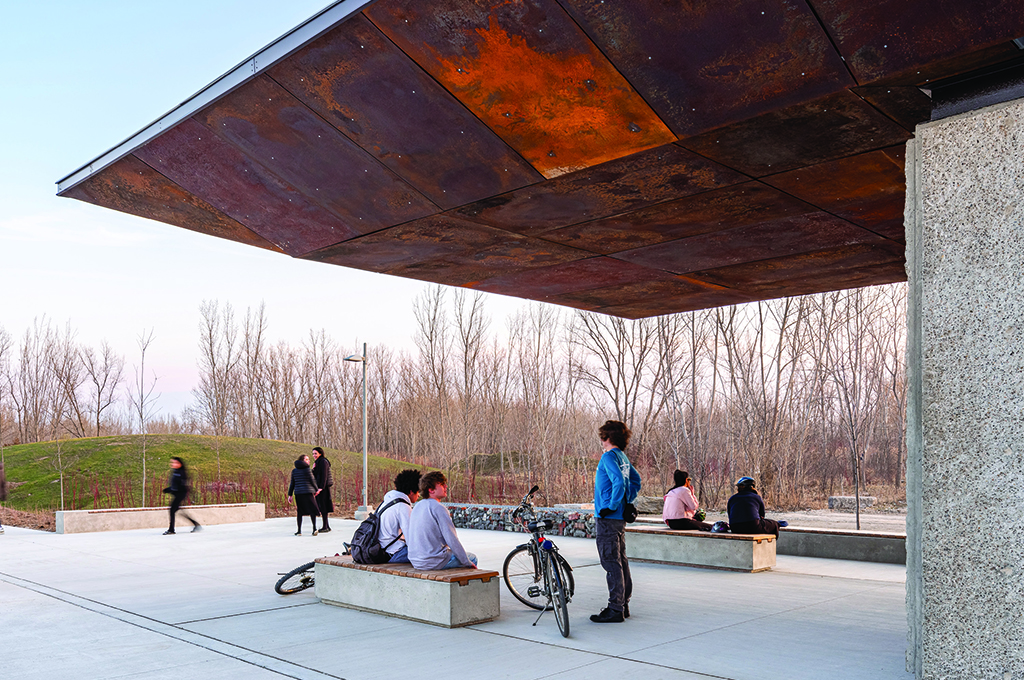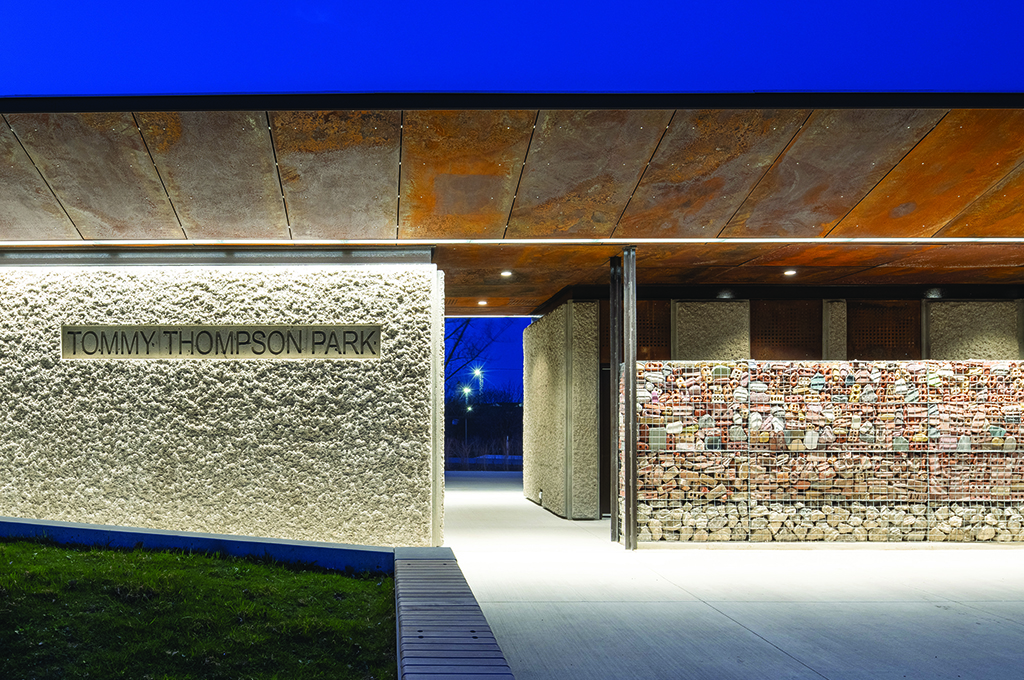Climate Action
The architecture profession must play a role in stabilizing the climate change crisis, lowering greenhouse gas (GHG) emissions in favour of clean power. This is one of the reasons why the OAA has chosen “climate action” as a theme in its strategic plan.
As it did in 2020, the OAA once again required Energy Usage Intensity (EUI) metrics to be included as part of the submissions process for the 2022 Design Excellence Awards program. EUI is the measurement of a building's annual energy consumption relative to its size. The lower the number, the less impact the building has on our climate. You can learn more about the OAA’s Total EUI Calculator online tool, free for both members and the public, by clicking here. Attached is the 2030 Ontario Target Data chartwhich shows the EUI goals for the 2030 challenge based on the building type.
TEUI of the project: 113 kWh/
m2
Location: Toronto, Ontario
Architect: DTAH Architects Limited
Located in Toronto’s Port Lands Precinct, Tommy Thompson Park is a unique urban wilderness minutes from downtown, located on a manmade peninsula known as the Leslie Street Spit. The Tommy Thompson Park Entrance Pavilion establishes a new front door to the park that is welcoming, engaging, and ecologically sensitive to its context. Serving as a centre for discovery and education, the entrance pavilion is designed as a simple, yet elegant, form split in two halves, covered by an expansive cantilevered roof. One half of the structure houses accessible public washrooms, while the other contains administrative spaces that support on-site educational programming.
 Photo Credit: Scott Norsworthy
Photo Credit: Scott Norsworthy
The project extends the look and feel of the existing park infrastructure to strengthen the identity of the park as a whole, while drawing specific material inspiration from the surrounding urban wilderness and the industrial past of the site. For example, the use of weathering steel for the pavilion’s soffit reflects the surrounding landscape’s dogwood thicket, while the chiseled concrete exposes aggregates that make up the lakefill of the headland. The gabion screens display and reinterpret the generations of debris used to build the Spit—brick, concrete, steel, and plastic—sustainably sourced from the adjacent shoreline.
 Photo Credit: Scott Norsworthy
Photo Credit: Scott Norsworthy
Evolving from a post-industrial wasteland to a natural oasis filled with more birds and butterfly species than any other City park, the site has become one of the most cherished and well-visited landscapes in the City. Introducing a memorable and safe entrance pavilion and orientation point for visitors, providing all-season gender-neutral and barrier-free washrooms supporting visitor comfort, contributes significantly to the surrounding community and beyond.
 Photo Credit: Scott Norsworthy
Photo Credit: Scott Norsworthy
The site design seeks to demonstrate best practices in low-impact development by creating a tabletop of activity knit into its natural setting, structured with active-transportation linkages and pedestrian safety in mind, and landscaped berms and bioswales supporting stormwater management and habitat restoration. All materials and systems were chosen for their longevity and durability: locally sourced, bird-friendly, vandal-resistant, and requiring little to no maintenance. The architecture and landscape architecture meaningfully connect the entrance pavilion to its site, communicating the story of the Spit as both a manmade place, as well as a place of natural beauty and ecological importance.
 Photo Credit: Scott Norsworthy
Photo Credit: Scott Norsworthy
Tommy Thompson Park and the history of the Leslie Street Spit echo the history of urbanization in Toronto. Telling this story and honouring this unique setting were important ambitions influencing the design of the Pavilion. The story is reflected in numerous ways including in the interpretive strata of rubble of the gabion wall, and details of the concrete, wood and steel in the building’s construction. For an utilitarian park building commissioned by the City of Toronto to embody, in its architecture and landscape, the rich history and narrative associated with Tommy Thompson Park, is an unique achievement of architectural excellence.
This blOAAg post is part of a series exploring the OAA’s 17 Design Excellence Finalists for 2022, as selected by our jury.
Click here to see other projects from this current award cycle.